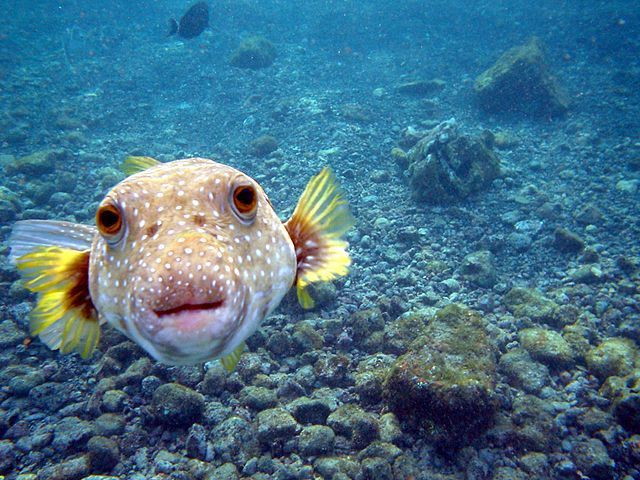Humans May Grow Beaks One Day, Scientist Says: Evolution Or Intelligent Design?

Dr Gareth Fraser, a biologist at the University of Sheffield's Department of Animal and Plant Sciences, is interested in why humans make only two sets of teeth — baby teeth and adult ones — while some creatures create an endless supply. Sharks, for instance, will grow new teeth around once every two weeks while blowfish constantly produce the tooth-like material that creates their beak. In fact, they are more robust and practical than mere teeth as beaks do not rot, fall out, or chip.
One day, predicts Fraser, humans could grow beaks. "With our extended lives and modern diets, the limited supply of human teeth is really no longer fit for purpose," Fraser told the Daily Mail. Although several million years away, the day could come where teeth fuse together and form a tough, pointy beak, he explained.
Meanwhile, Fraser continues to research 'dentition,' or the development and arrangement of teeth in various species of fish.
African Fish
In a recent study, Fraser explored the cells and molecular mechanics responsible for the constant regeneration of dentition in Lake Malawi cichlid fishes. "Our dissection of the molecular mechanics of vertebrate tooth replacement coupled to complex shape pinpoints aspects of odontogenesis that might be re-evolved in the lab to solve problems in regenerative dentistry," Fraser wrote in a paper published just two months ago. In other words, these cells, nicknamed 'tooth fairy' cells, as well as other features studied by Fraser could hold the key to allowing humans to grow set after set of teeth.
Cichlids share a single key trait: the fusion of the lower pharyngeal bones (teeth in the arch of the throat) into a single tooth-bearing structure. A complex set of muscles allows the upper and lower pharyngeal bones to be used as a second set of jaws for processing food. Cichlids are efficient feeders that capture and process a very wide variety of food items.
Along with cichlids, Fraser has studied pufferfish, which are a type of extremely diverse bony fish with a unique beak-like jaw. They make up almost half of all living vertebrates and, with the pufferfish genome project near completion, they have recently become a useful genetic model. Fraser's research catalogued the dental development throughout all stages of the pufferfish's growth, from the production of initial-teeth to the construction of its distinctive 'beak.' The research showed that the strange structure didn't appear from scratch during embryonic development as a complete vertebrate novelty, but rather originates from the modified development of replacement teeth after the formation of an initial dentition, which appears like 'normal' fish teeth. "It is an example of re-specification of its genetic tool-kit for tooth development toward a very alternative, and unique, dentition," said Fraser.
Fraser believes that knowledge of the genetic underpinnings of tooth replacement in fishes will ultimately facilitate advances in dental therapies. "It is of great interest for science to understand the process of tooth replacement, to understand the genes that govern the continued supply of teeth and mechanisms of dental stem cell maintenance," he said.
Source: Fraser GJ, Bloomquist RF, Streelman JT. Common developmental pathways link tooth shape to regeneration. Developmental Biology. 2013.
Published by Medicaldaily.com



























